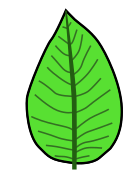Stamp: Numeral (Canada 1967)
Numeral (Canada 1967)
01 January (Canada ) within release Postal Note / Scrip goes into circulation Stamp Numeral face value 8 Canadian cent
Stamp is square format.
Small format (20 x 17 mm)Also in the issue Postal Note / Scrip:
- Stamp - Numeral face value 3;
- Stamp - Numeral face value 2;
- Stamp - Numeral face value 6;
- Stamp - Numeral face value 10;
- Stamp - Numeral face value 50;
- Stamp - Numeral face value 90;
- Stamp - Numeral face value 1;
- Stamp - Numeral face value 2;
- Stamp - Numeral face value 4;
- Stamp - Numeral face value 5;
- Stamp - Numeral face value 6;
- Stamp - Numeral face value 7;
- Stamp - Numeral face value 8;
- Stamp - Numeral face value 9;
- Stamp - Numeral face value 10;
- Stamp - Numeral face value 20;
- Stamp - Numeral face value 30;
- Stamp - Numeral face value 40;
- Stamp - Numeral face value 50;
- Stamp - Numeral face value 60;
- Stamp - Numeral face value 70;
- Stamp - Numeral face value 80;
- Stamp - Numeral face value 90;
- Stamp - Numeral face value 3;
- Stamp - Numeral face value 4;
- Stamp - Numeral face value 5;
- Stamp - Numeral face value 7;
- Stamp - Numeral face value 8;
- Stamp - Numeral face value 9;
- Stamp - Numeral face value 20;
- Stamp - Numeral face value 30;
- Stamp - Numeral face value 40;
- Stamp - Numeral face value 60;
- Stamp - Numeral face value 70;
- Stamp - Numeral face value 80;
|
Data entry completed
53%
|
|
|---|---|
| Stamp Numeral in digits | |
| Country: | Canada |
| Date: | 1967-01-01 |
| Perforation: | 11 |
| Emission: | Revenue |
| Format: | Stamp |
| Face Value: | 8 Canadian cent |
Stamp Numeral it reflects the thematic directions:
A leaf (pl.: leaves) is a principal appendage of the stem of a vascular plant usually borne laterally aboveground and specialized for photosynthesis. Leaves are collectively called foliage, as in "autumn foliage", while the leaves, stem, flower, and fruit collectively form the shoot system. In most leaves, the primary photosynthetic tissue is the palisade mesophyll and is located on the upper side of the blade or lamina of the leaf but in some species, including the mature foliage of Eucalyptus,palisade mesophyll is present on both sides and the leaves are said to be isobilateral. Most leaves are flattened and have distinct upper (adaxial) and lower (abaxial) surfaces that differ in color, hairiness, the number of stomata (pores that intake and output gases), the amount and structure of epicuticular wax and other features. Leaves are mostly green in color due to the presence of a compound called chlorophyll which is essential for photosynthesis as it absorbs light energy from the sun. A leaf with lighter-colored or white patches or edges is called a variegated leaf.
A number is a mathematical object used to count, measure, and label. The most basic examples are the natural numbers 1, 2, 3, 4, and so forth. Numbers can be represented in language with number words. More universally, individual numbers can be represented by symbols, called numerals; for example, "5" is a numeral that represents the number five. As only a relatively small number of symbols can be memorized, basic numerals are commonly organized in a numeral system, which is an organized way to represent any number. The most common numeral system is the Hindu–Arabic numeral system, which allows for the representation of any non-negative integer using a combination of ten fundamental numeric symbols, called digits. In addition to their use in counting and measuring, numerals are often used for labels (as with telephone numbers), for ordering (as with serial numbers), and for codes (as with ISBNs). In common usage, a numeral is not clearly distinguished from the number that it represents.
Flora is the plant life occurring in a particular region or time, generally the naturally occurring or indigenous—native plant life. The corresponding term for animal life is fauna. Flora, fauna and other forms of life such as fungi are collectively referred to as biota. Sometimes bacteria and fungi are also referred to as flora, as in the terms gut flora or skin flora.



